The hill neighborhood of Cimiez is a cool, relaxing neighborhood with several imporant museums, Roman ruins, a vast park and the gardens of the Franciscan monastery. It's easy to spend a day visiting the sights and appreciating the incredible variety of architecture, mostly built around the turn of the 20th century. The quality of the Belle Epoque buildings in why Cimiez is part of Unesco Nice.
Cimiez is one of Nice's most desirable neighbourhoods and has been a status address ever since Queen Victoria made it her winter holiday spot of choice in 1895.
Cimiez's story begins with the ancient Ligurians who occupied the hill for centuries before the Romans arrived in the 1st century BC. It was a good spot for a military outpost as it was far from the sea and close to the route linking France and Italy. It may have been the Ligurians who first referred to their settlement as Cemenelum which the Romans adopted as the name of their military outpost here. After they subdued local resistance, the Romans made Cimiez the provincial capital of Alpes maritima in the 1st century AD.
In addition to building aqueducts to supply their city of about 10,000 with water, the Romans built an amphitheater (now the Arenas) and public baths. In the 4th century the Romans extended their reach to other regions and Cemenelum's importance declined relative to its ancient rival, Nikaia. People drifted away, leaving only a few farms. The ancient Roman city fell into ruin, its stones used for building materials or covered in weeds.
In the 16th century the Franciscans took over a former Benedictine church and built a monastery. The Franciscan Monastery was surrounded by farmland and gradually Nice's affluent families began building holiday homes on the hill. The 17th century Palais Gubernatis that now houses the Matisse Museum is an example.
Cimiez's fortunes changed dramatically in the late 19th century. With an eye to attracting wealthy Europeans, real estate developers laid out the grand boulevard de Cimiez and sold off plots to be developed into luxury hotels, villas and apartment buildings. Then, when Queen Victoria chose the Excelsior Regina Hotel as her favorite holiday spot in 1895, the neighborhood rocketed to the top of everyone's "must visit" list and never looked back.
Architects outdid themselves in creating splendid buildings that offered the most modern amenities to attract the cream of European nobility. The winter season was a round of balls and dinner parties, concerts and exhibits. The outbreak of WWI put an end to the fun. Some of the grand buildings were turned into military hospitals and most had to be renovated after the war. Guests returned but not in the same numbers.
The decline continued during the crash of 1929 and WWII. After WWII, the hotels were turned into luxury apartments. Many of the old mansions were torn down and replaced with the apartment buildings you see today. Fortunately enough older buildings remain to conjure up the days when Cimiez was the European epicenter of grace and elegance.
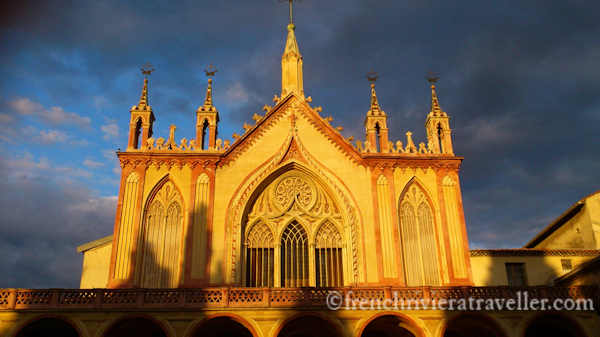
First the Romans erected a temple to the goddess Diana on this spot. The four steps to enter the church come from the remains of the Roman temple. After taking possession of the former Benedictine church in 1546 the Franciscan monks' first job was to sink a well. Next, they erected a small cloister with monk cells next to the dilapidated old church, Sainte-Marie des Anges, that remained from the Benedictine days. Over the years they repaired the church and about a century later built a larger cloister. The generosity of the local nobility allowed them to expand the church and install their treasures.
Their most prized treasures from their former monastery included three masterpieces from Nice artist, Louis Brea (c1450-1523). Working with his brother, Antoine, Louis Brea bridged the Middle Ages and the Renaissance with scrupulously detailed religious paintings. The monastery possesses La Crucifixion, La Pieta and La Deposition de Croix. Consecrated in 1667, Sainte-Marie des Anges was adorned with a massive carved wooden altarpiece.
In 1697 the brothers acquired the skeletal remains of Saint Victoria which added to the church's prestige. Saint Victoria's skeleton is displayed on the church's left aisle.
Revolutionaries seized the monastery in 1793, turning it into a barracks and then a military hospital. After regaining possession of their monastery the monks set about restoring, improving and redesigning their property. The astonishing western facade was rebuilt in 1845 in troubadour style with slender steeples. On each side of the door are inscriptions relating the history of Cimiez.
There is also a small museum on the 2nd floor that depicts the daily life of a Franciscan monk but it is currently closed.
(Monastery opening hours 9am-6pm Thurs-Tues)
One of the most precious treasures is the Croix Seraphique sculpted in 1477 that depicts Christ with wings. The Seraphic Christ of the sculpture refers to Saint Francis' vision of Christ while he prayed on a Tuscan mountain. Depictions of Christ with wings are exceedingly rare. A copy stands outside the entrance to the Cemetery.
Don't miss the Monastery Gardens, the oldest and most scenic gardens in Nice with sweeping views over the region. There are orange trees, lemon trees, olive trees, magnificent magnolias, cypresses, oaks, climbing roses and other flowers.
No visit would be complete without a stroll through the Franciscan Monastery Cemetery, a veritable museum of 19th-century funerary art. Signs direct you to the most famous resting residents of the cemetery including painters Raoul Dufy and Henri Matisse. Although they had become estranged in life, Matisse's wife, Amelie, is buried with him.
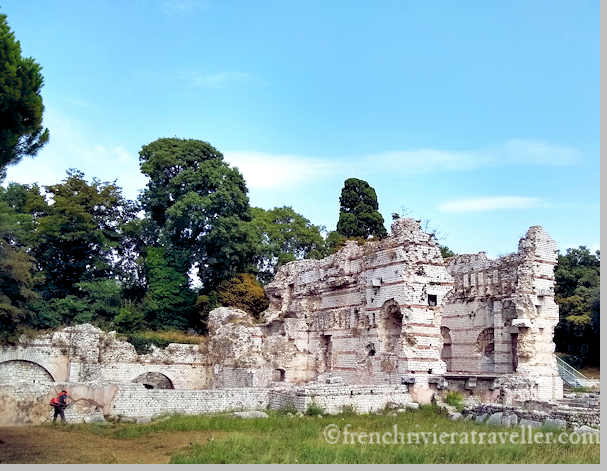
Much of the hilltop is devoted to the Le Jardin des Arenes de Cimiez, a vast park and garden that includes the Roman amphitheater, Roman baths, Archaeological Museum and Matisse Museum. It was the site of the Nice Jazz Festival until 2014. You'll notice that the paths are marked with the names of famous jazz musicians that played there over its 55-year history.
The Arenas is a Roman amphitheater built between 70 and 85AD and then modified a few times until the 3rd century. Its elliptical form could accommodate up to 5000 spectators on its bleachers yet this is considered a relatively small Roman amphitheater. The 7m high structure on the northeast side was used to stretch out an awning to protect the crowds below. The two monumental entrance ways on the north and south axis were rebuilt in the 1930s. It was through the southern gate, porta triumphalis, that the VIPs entered to take their places in the loges to the east and west. The gladiators entered through the northern gate, porta libitinensis, which also served to evacuate the wounded and dead.
Stay in Cimiez
|
Entrance to the Roman baths is through the Archaeological Museum, a perfect way to understand the site. Especially evocative are the mock-ups that show the Baths as they once looked. But there's much more. The museum displays objects from ancient Cemenelum as well as the entire region, drawn from archaeological excavations and private collections.
There were three zones in the thermal baths of Cimiez: North, East and West. The North baths were the first and largest, probably built sometime between the 1st and 3rd centuries AD.
All were constructed with brick on the outside and marble walls and floors inside. Each bath zone contained four spaces: the frigadarium (cold bath); tepidarium (lukewarm bath); laconicum (sauna) in the rear of the tepidarium; destricatrium for scraping oil and sweat from the body; caldarium (hot bath). Two aqueducts supplied the site with water. Drainage pipes emptied into a large basin at the foot of the southern facade of the East baths. The North baths are the most complete of the thermal complexes. The heating system, the praefurnium, is located north of the three hot rooms. The North baths was actually occupied by a farm family until the 1950s.
At the end of the 5th century, Christians settled the West baths and transformed it into a cathedral and baptistery. It was the first settlement of Christians in Nice. Remains of the frigidarium and caldarium are still visible and were probably used in baptism rituals. The discovery of an earring and hairpins in one of the basins led to the speculation that this zone was for ladies.
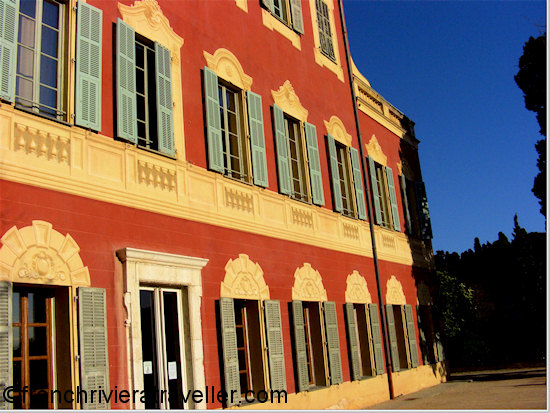
The Matisse Museum is housed in a stately 17th century Genoese-style villa. Painted in cheerful red tones and decorated with trompe-l'oeil windows, it had belonged to the Gubernatis family before becoming a hotel at the end of the 19th century.
Matisse's first works dating from 1890 to 1905 are displayed on the ground floor of the villa. Matisse's stay in Nice is memorialized in his masterpieces Tempete a Nice (1919) and Odalisque au Coffret Rouge (1926). Also notice his most famous paintings from the 1930s which include Fenetre a Tahiti and Nymphe dans la foret. An entire room is dedicated to the cut gouaches the artist created in later years as his physical health declined. Throughout the museum, the life and personality of the artist emerges through displays of the objects he painted as well as family photographs. In addition to the permanent collection housed in the villa, a series of temporary exhibitions are mounted in the villa's modern wing.
(open 10am-6pm Wednesday to Monday)
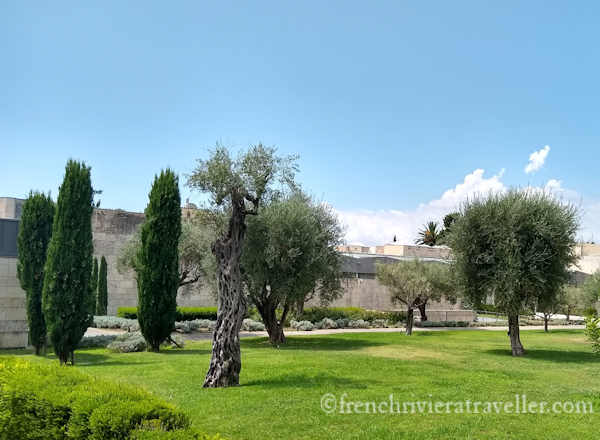
Dedicated to the works of Marc Chagall, it's one of the few museums where the artist himself had a hand in its design. Chagall loved the region and moved to nearby Vence in 1950. It was there that he created the Biblical Message cycle, composed of 17 large paintings on Old Testament themes. His donation of these paintings to France inspired the creation of this museum.
In 1970 architect Andre Hermant began construction of the museum with substantial input from the artist. Chagall wanted the building to be a place of spirituality, not exactly a museum and not exactly a chapel but a serene environment for prayer and meditation. The clean, sober lines of the building and oblique lighting keep the focus on the master's vivid colors and striking forms, just as he wanted.
As the project took shape, Chagall requested the addition of an auditorium and ornamented it with stained-glass windows depicting the creation of the world. The auditorium shows a documentary film that acquaints visitors with Chagall's life and works during the day and serves as a concert hall on occasional evenings. Chagall decided how the paintings were to be exhibited and even created a new wall mosaic, The Prophet Elijah, especially for the museum.
Chagall also worked on the design of the garden with Henri Fisch. The trees are Mediterranean: olive, cypress, pine and green oak. White and blue flowers predominate and the African lilies are set to blossom on Chagall's birthday, July 7. The museum opened in July 1973 on Chagall's birthday in the presence of the artist himself. Chagall participated in the museum's exhibitions and events for the rest of his life.
(open 10am-6pm Wednesday-Monday)
Stroll down the boulevard de Cimiez to admire the majestic turn-of-the-20th-century hotels. Highlights include the
Excelsior Regina Hotel at no 71
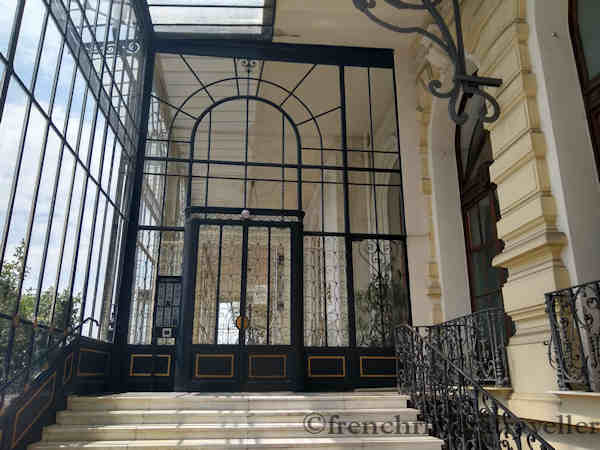
Winter Palace at no 82
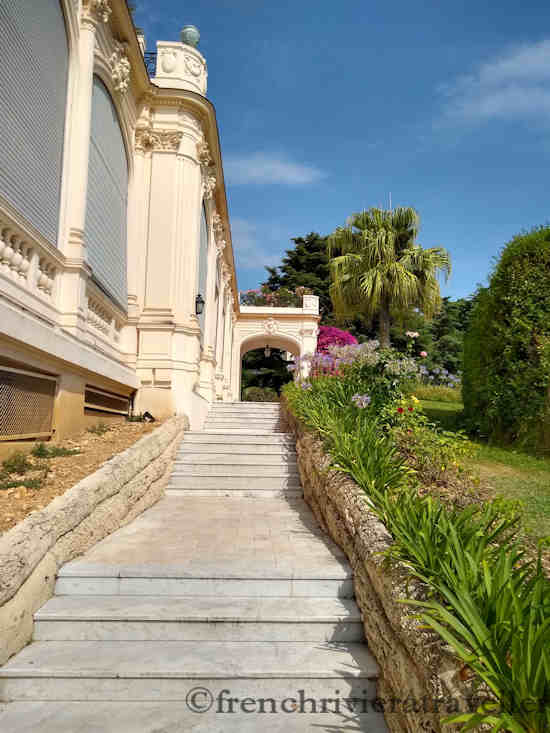
Hotel Alhambra at no 48

Villa Paradiso at no 24
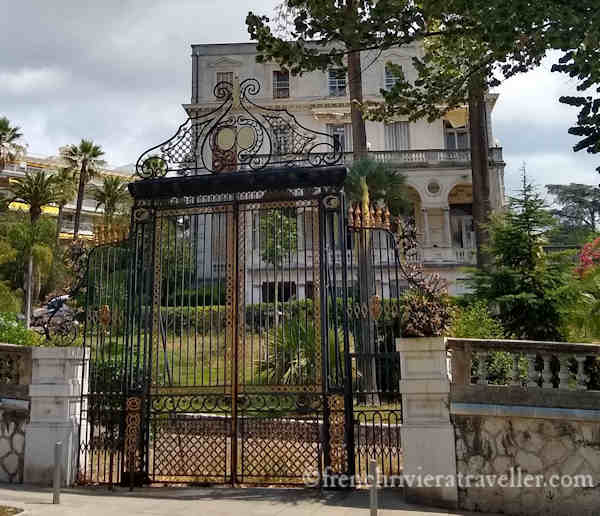
For a step-by-step guide to the history, sights and architecture of Cimiez see Nice Uncovered: Walks Through the Secret Heart of a Historic City.
Buses number 5 and 33 go to the top of the hill where the Monastery, Roman baths and Matisse Museum are located.